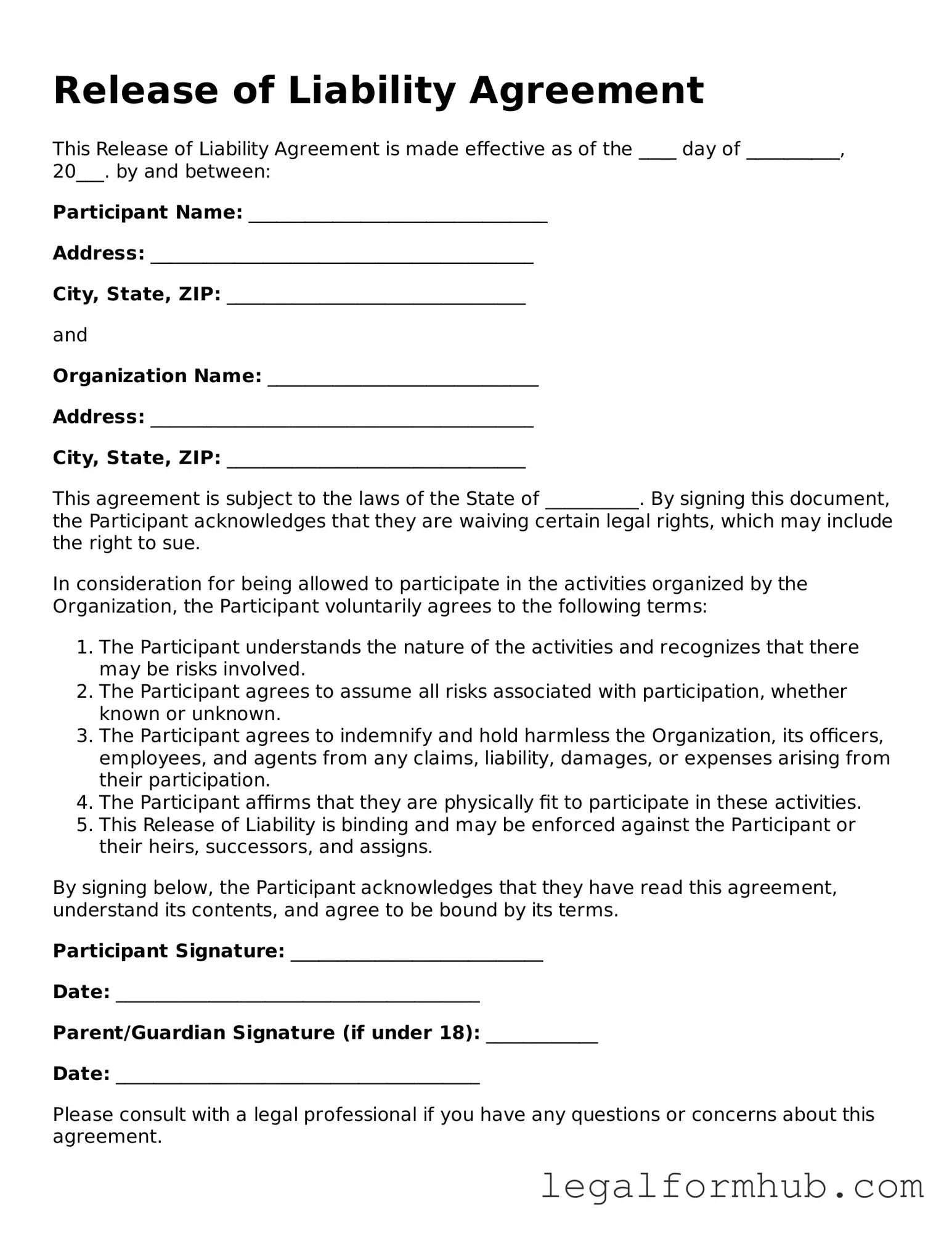Printable Release of Liability Document
A Release of Liability form is a legal document that protects an organization or individual from being held responsible for injuries or damages that may occur during an activity. By signing this form, participants acknowledge the risks involved and agree not to hold the provider liable for any accidents. Understanding this form is crucial for anyone engaging in activities that carry inherent risks, ensuring informed consent and peace of mind.
Open Release of Liability Editor Here
